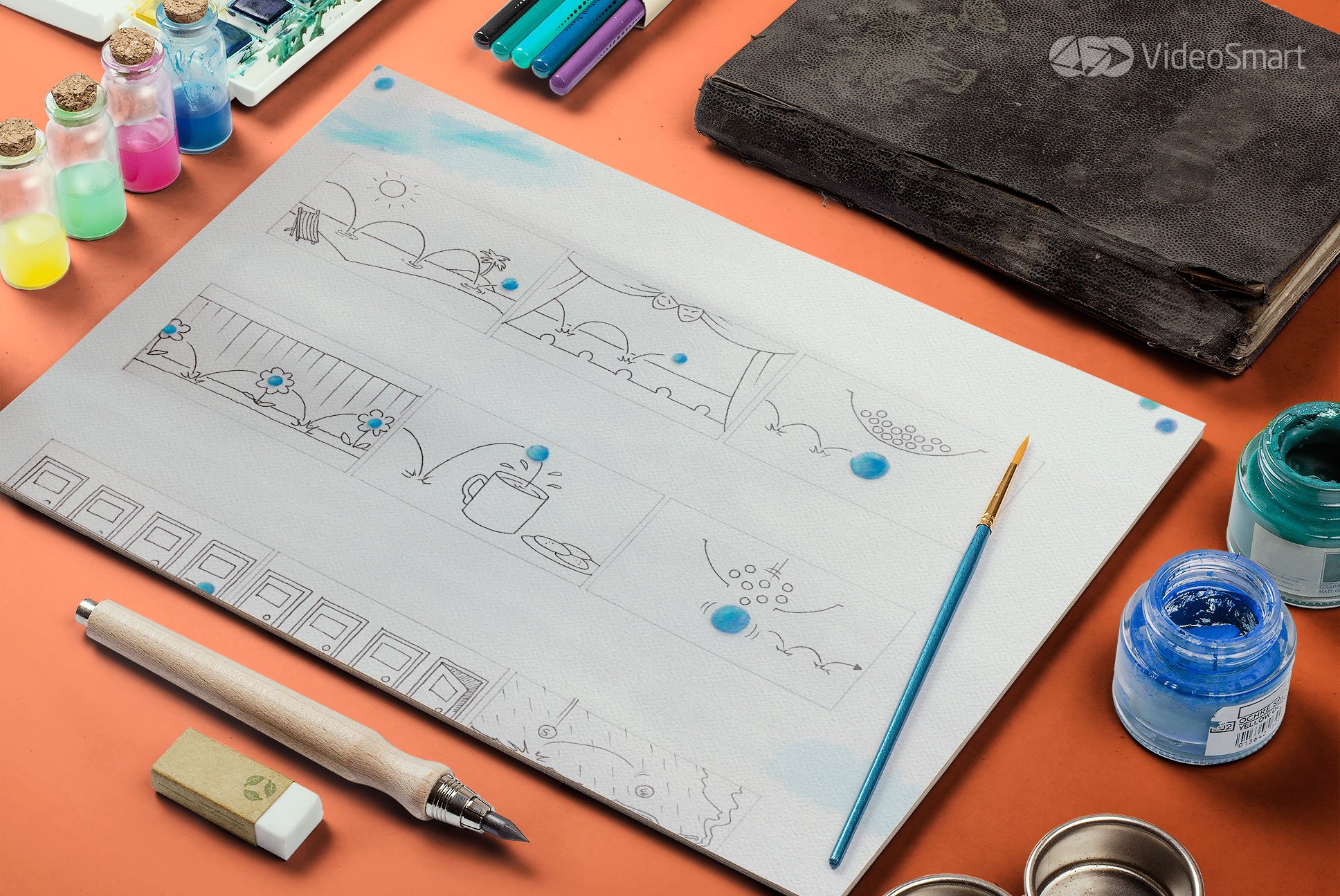The Best 6 Tips To Review A Storyboard

If video forms part of your communications strategy, you’ll know the importance of the pre-production phase.
Scriptwriting and storyboarding are fundamental stages of video production and lay the foundations for a polished product.
At VideoSmart, we use storyboarding as a means to bring a script to life, giving clients the opportunity to visualise a video before it forms its final shape. So, what should the client take into account when reviewing a storyboard?
1. Review The Storyboard Against Brand Guidelines
You want the style to look and feel in line with the rest of your marketing collateral, so always ensure your production company has all brand guidelines available to them.
Even more helpful are examples of past campaigns and videos that may be relevant, so arm them with all these tools where possible.
At VideoSmart, our in-house illustrators will use these examples as a starting point for their drawings.

2. Check The Flow
You’ve received the first draft of the storyboard and whilst your instincts are telling you to dissect it right away, our recommendation would be to review it from start to finish several times without interruption to check if the overall flow works.
At VideoSmart, face-to-face storyboard review sessions are a key stage of our project timelines, allowing our team to take the client through the script and visuals as one.
The big question then is; does the storyboard tell the story that you’re trying to convey?
3. Read The Script Out Loud Alongside The Storyboard
A piece of advice when reviewing a storyboard is to read the script out loud to get a sense of the timings, story and emotions.
During this step, you might find out that you’d like to add or cuts words to improve the flow of the script.
You might also want to add key points to strengthen the scenes and convey the message better. Don’t hold back – this is the most critical stage of producing any video.
4. Be Detailed In Your Feedback
When leaving your feedback, be as clear and detailed as possible.
When you don’t know what visuals you’d like to see (after all, it’s not your job), provide your feedback in the form of emotions – “this doesn’t make me excited about the product”, “I feel bored by 45 seconds”, “the colours are dull”, “it’s too fast-paced”.
This kind of feedback will allow the creative team to put themselves in your shoes and come up with ideas to change your perceptions.

5. Ask Colleagues For Feedback
Share the storyboard with the rest of the team. Everyone looks at things differently when reviewing content.
Some members of your team might pay more attention to style, others might pick up on the finite details, while some may focus on emotions.
When reviewing the storyboard, our tip is to gather all feedback in one go – it’s amazing what you’ll find when you ask for more opinions.
6. Make Use Of Your Account Manager
Don’t hesitate reaching out to your Client Manager if you any doubts.
The Client Manager will be able to provide advice on how to convey the message in a clear and concise way, work with you to deliver the best solutions and liaise with the creative team to come up with new ideas.
VideoSmart will always provide clients with a dedicated team to deliver storyboards and eventually a video that meets your vision and goals.
Conclusion
Storyboarding is important. Why?
Firstly, they’re a helpful way to determine the best way to tell the story in a given timeframe.
Secondly, they’re extremely helpful for the animator or filmmaker.
And thirdly, they’re a fantastic way for you, the client, to visualise exactly what your final video will look like and a great chance for you to nail the creative at the earliest possible stage.
Incorporate the above tips the next time you review a storyboard and see how you get on.


